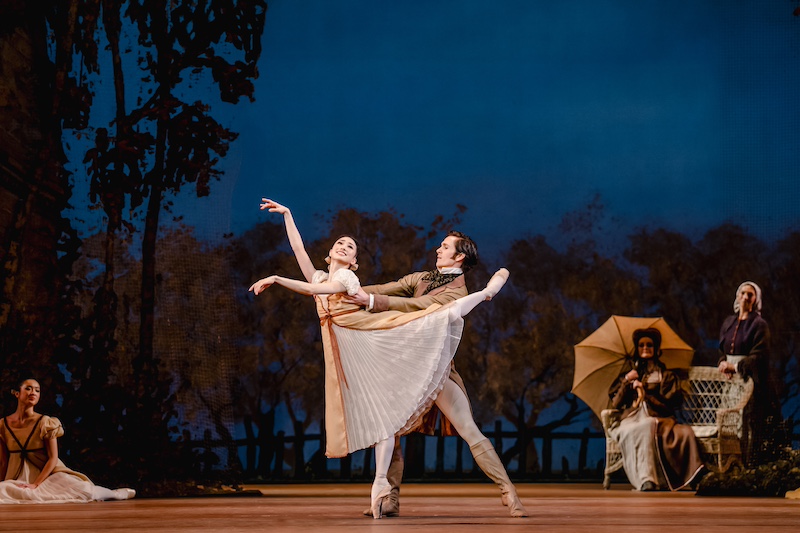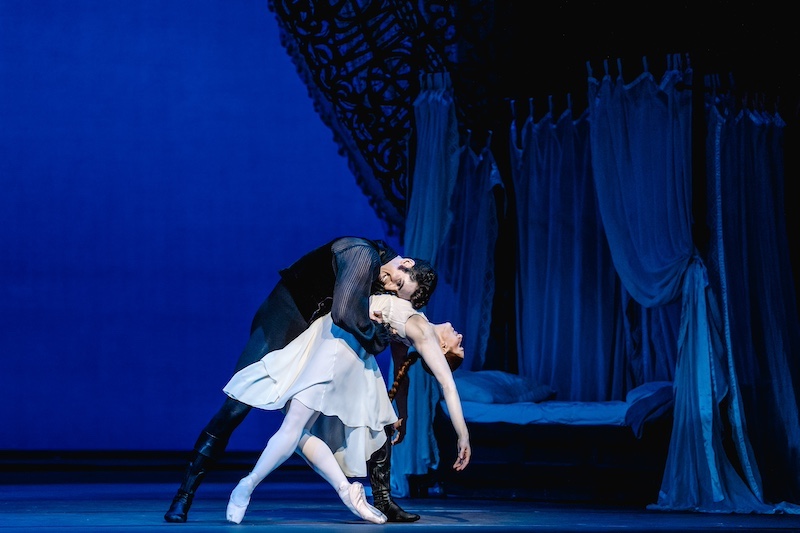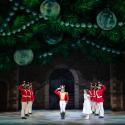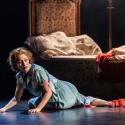It would be hard to find an antihero more anti than Eugene Onegin. The protagonist of Alexander Pushkin’s long verse novel of 1833 is a wrecker of lives. Charismatically handsome yet arrogant, cynical and bored, his effect on those who fall under his spell is toxic. And yet in the mid-1960s his story suggested itself as material for a ballet so luminous and compelling that it has outlived its choreographer by more than half a century.
Undaunted by the existence of two famous operatic treatments, John Cranko – then director of Stuttgart Ballet – saw the potential for wordless drama in what was originally a very wordy tale. More specifically, he saw the potential for tracking in dance the subtlest gradations of feeling so that, over the course of a single dance number, it would be possible to read the vacillations of a character’s mind. In this way Onegin, revived by the Royal Ballet in a refreshed production to mark the work’s 60th anniversary, set a new benchmark for psychological dance-drama. It remains superb. You might think that the choreographer would have hitched a ride on Tchaikovsky’s hugely popular opera, Eugene Onegin, borrowing at least some of its tunes. Instead, he uses other (lovely) music by Tchaikovsky, and although his ballet does follow the outline of the opera’s story – an impressionable girl sends a love letter to an older man who, years later, desperately regrets his rejection of her – its dynamics are different. Opera’s Onegin is a man who finds himself in a difficult spot. Ballet’s is a danger to mankind.
You might think that the choreographer would have hitched a ride on Tchaikovsky’s hugely popular opera, Eugene Onegin, borrowing at least some of its tunes. Instead, he uses other (lovely) music by Tchaikovsky, and although his ballet does follow the outline of the opera’s story – an impressionable girl sends a love letter to an older man who, years later, desperately regrets his rejection of her – its dynamics are different. Opera’s Onegin is a man who finds himself in a difficult spot. Ballet’s is a danger to mankind.
Marianela Nuñez has dug deep into the character of Tatiana, whom we first meet as a 17-year-old propped on her elbows in the garden with her nose in a romantic novel. An introduction to the friend of her sister Olga’s suitor triggers instant infatuation. It’s almost painful to witness her puppyish devotion (pictured top) as she flutters in tiny delicate steps to keep up with the striding, scowling visitor who barely registers her. When Onegin does eventually remember his manners, it’s merely to lift Tatiana in the air where she dangles like a small child, helpless and dazed. His attention more often turns to himself in lugubrious solo excursions, one hand pressed to his brow. Reece Clarke, with his impressive height and imperious features, might have been born to inhabit this role.
What a contrast with his friend Lensky (a bouncy and blithe William Bracewell) whose relations with Tatiana’s younger sister Olga (Akane Takada, pictured above with Bracewell) appear healthy, balanced and loving. There is barely a dry eye in the house when the solo cello introduces their Act I duet. The ballet’s four pas de deux are the engine of the ballet’s action, offering a perfect arc of contrasting views of love, including the violence of passion unrequited – as Onegin steps through Tatiana’s bedroom mirror in her dream (pictured below) – and the mature, lasting trust between Tatiana and the man she eventually marries. This is essentially Tatiana’s story, not Onegin’s. And it’s about an especially painful transition from girl to woman, a process that Nunez’ performance brings into particular focus. In the first two acts we see her learning to conquer every shade of girlish feeling – shyness, giddy anticipation, shame, despair – purely through the pulse of her dancing. It’s only in the final 20 minutes, when the aged and wretched Onegin prostrates himself, begging Tatiana to acknowledge her feeling for him, that we get the full picture of her journey in one of the 20th century’s most extraordinary pas de deux. Expressionistic, even ugly, a bout of wrestling as much as dance, it’s full of strange, rugged imagery that speaks of a woman at war with her sexual instincts. Its athleticism is extreme, its pace relentless, and when Tatiana gathers her last ounce of moral and physical strength to show this terrible man the door, you want to shout with relief.
In the first two acts we see her learning to conquer every shade of girlish feeling – shyness, giddy anticipation, shame, despair – purely through the pulse of her dancing. It’s only in the final 20 minutes, when the aged and wretched Onegin prostrates himself, begging Tatiana to acknowledge her feeling for him, that we get the full picture of her journey in one of the 20th century’s most extraordinary pas de deux. Expressionistic, even ugly, a bout of wrestling as much as dance, it’s full of strange, rugged imagery that speaks of a woman at war with her sexual instincts. Its athleticism is extreme, its pace relentless, and when Tatiana gathers her last ounce of moral and physical strength to show this terrible man the door, you want to shout with relief.
For the sake of this anniversary run, Jürgen Rose’s sets have undergone a bit of a refurb. The duel scene with its mournful landscape of leafless silver birch is still the most memorable. But both the ballroom scenes sparkle, the second showing how far Tatiana has risen in the world through marrying well. And the country garden in the opening scene seems to have been simplified to allow the maximum possible space for ensemble cavorting. The flashing diagonals of leaping local youth are sheer delight.














Add comment